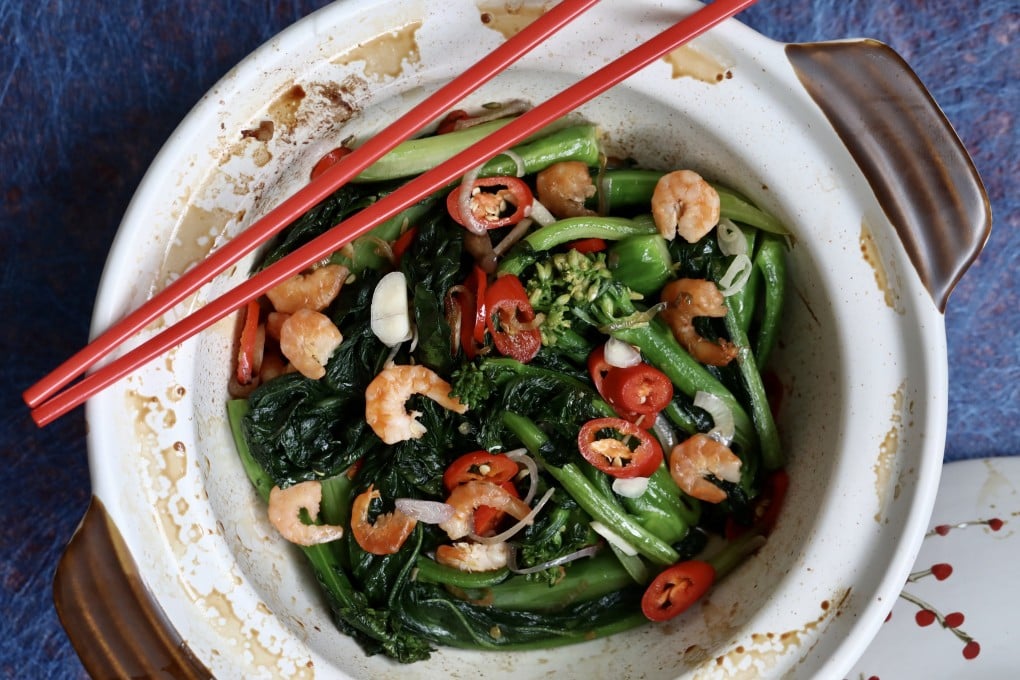How to make Chinese sizzling vegetable pot (jer jer choi), a delicious homestyle dish that takes minutes to cook
- This dish of Chinese broccoli or kale with dried shrimps and shrimp paste is great for the Lunar New Year
- The dish cooks in minutes, but you must preheat the clay pot in the oven for 20 minutes before starting

Jer jer (sometimes spelled je je) is a cooking style that gets its name from the sound the ingredients supposedly make as they sizzle in a clay pot. Often, it refers to chicken served in a clay pot, but it is also used for vegetables.
This is a great dish for the Lunar New Year. It takes just a few minutes to cook, and is absolutely delicious.
For a New Year feast, you might want to use Chinese lettuce (or small heads of romaine) – cut through the stem into four wedges – because sang choi is considered an auspicious vegetable; it is supposed to bring wealth. Lettuce needs to be cooked briefly, though, so that it retains its crisp texture.
A sturdier vegetable, such as gai lan (Chinese broccoli or kale) is more forgiving with the cooking time, so that’s what I use. Buy Chinese broccoli or kale with stalks that are about 2cm (¾ inch) in diameter at the thickest point. The stems take longer to cook than the leaves, so prepare them as directed.
There are several types of fermented shrimp paste. I love the hard, crumbly type that comes in a small brick, but it’s not easy to use – you have to crumble it first, then mash it with some liquid, otherwise you are in danger of having lumps of the pungent paste in the dish, and the taste can be overwhelming.